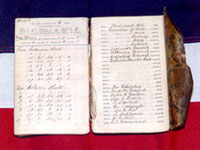Experiencing War: Stories from the Veterans History Project

This collection presents video and audio oral histories and additional material from American veterans of 20th-century wars. Materials include memoirs (some lengthy), letters, diaries, photo albums, scrapbooks, poetry, artwork, and official documents. The website currently provides digital materials from 4,351 veterans from World War I, World War II, the Korean War, the Vietnam War, the Persian Gulf War, Afghanistan and the Iraq War, and other similar events. The 226 video interviews range from 25 minutes to two hours in length.
The material presented is part of a rapidly growing archive, the Veterans History Project, created by Congress in 2000 to collect stories from the 19 million living veterans. Other sections highlight World War I; World War II's forgotten theaters in China, Burma, and India; and 37 other unique war experiences.
